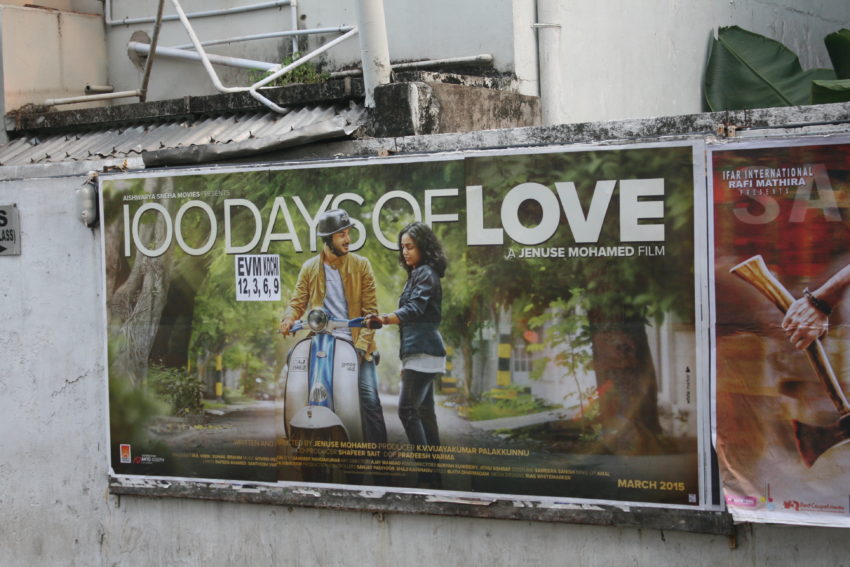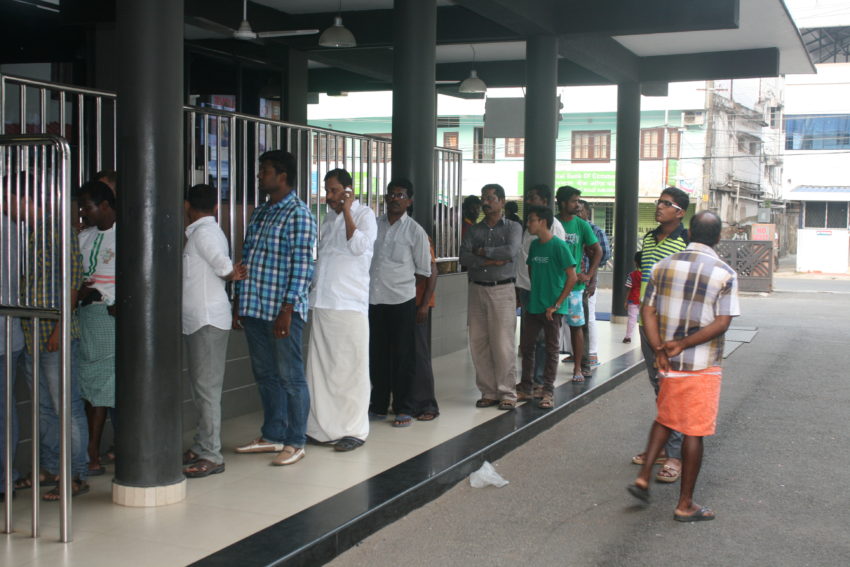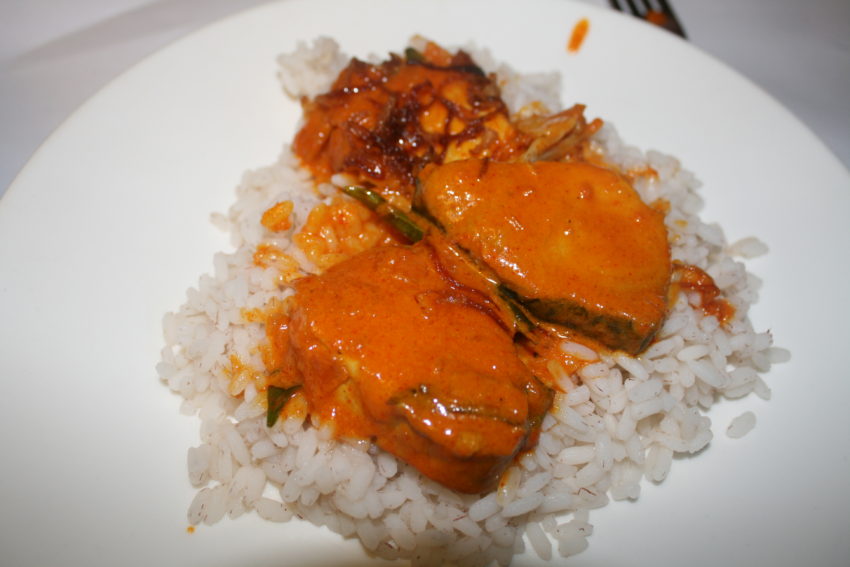India’s movie industry a $1.8 billion blockbuster but I want my 90 rupees back

KOCHI, India — I rarely go to movies when I travel. The vast majority of movies I could see in the States where they aren’t dubbed in the local language. I try not to do anything I could do in America, from the food to the entertainment. But, again, when in India …
… movies are as much a part of the Indian social fabric as the cotton in saris. Everyone has heard of Bollywood. It’s massive, much bigger than its richer, more famous cousin in Hollywood. However, Bollywood only represents movies coming out of Bombay, now known as Mumbai. There is also Kollywood (Chennai), Tollywood (Hyderabad) and Sandalwood (Bengaluru). Together, India produces more films than any country in the world. At last count in 2012 they made 1,602. Hollywood averages only 120-150, not including 40-60 independent films. For two weeks in India, I couldn’t go five minutes without seeing a movie poster. Beautiful, very light-skinned women in tight jeans fought for billboard space with muscled, tall, leading men with $100 haircuts. Every corner seemed to be plastered with two or three of the latest films.
Last night I went. Call it Kollywood. The state of Kerala here has one of India’s small regional film industries because it’s in the precarious position of being a state where the rest of the country has no clue how to speak its language. Before I came to India, I never heard of Malayalam. Hindi, the most widely spoken language or, at least, the biggest of the 28 so-called national languages, is written here on signposts but few speak it in Kerala and few understand it. Yet Kerala has the highest literacy rate in India. Go figure.
I chose last night due to this is one of my few nights in a true Indian city. Kochi has 600,000 people, the second largest city in the state which hugs the southwest coast of the country. Kochi was a major trading post dating back 1,000 years when the Dutch, Portuguese and English fought over the fledgling spice market. Today, the fishermen still use old fishing techniques introduced by the Chinese 600 years ago.
I actually came to Kochi just to see that (blog to follow) and to crash at allegedly the best collection of homestays in Kerala. Reds Residency was a nice, out-of-the-way, two-story home where I had a corner room that looked out onto a quiet road. This morning joggers plied by at 6 a.m. while I waited for my three-wheeled auto rickshaw.
The wife was a stunning, curvy woman in her 30s who looked as if she hopped off one of the movie posters. She recommended I see the latest “hit,” a love story called “100 Days of Love.” It sounded awful. It sounded stupid. I had to go.
The auto rickshaw driver drove away from the sea deep into the retail center of Fort Kochi, the neighborhood that encompasses the beachfront, museums and tourists who stay here on their way to somewhere else. He dropped me off at a cement block of a building. It had little narrow windows and a tiny non-descript sign with small block letters reading “EVM CINEMA.” It was as anonymous as a tool shed.

I stood in an unorganized line under a sign that read “GOLD CIRCLE GENTS 90 RUPEES.” Next to us was a line of women under “GOLD CIRCLE LADIES 90 RUPEES.” Between us were tall iron bars as if the two sexes were rats in cages and would explode in sexual havoc if they got out.
Ninety rupees is about $1.30. I haven’t paid $1.30 since about 1964 when one of two theaters in my hometown of Eugene, Ore., had Kiddies Saturday. Thirty movie companies appear on the National Stock Exchange of India. India’s movie industry grossed $1.8 billion in revenues in 2011. Do the math. Then you’ll grasp how popular movies are to Indians.
The theater was huge. It held about 2,000 people. That’s about the size of the Vienna State Opera house. The whole entire lower level was bigger than any theater in my old home in Denver. They funneled everyone to the balcony which must’ve held 500.
My Indian movie experience was long, dull and confusing. But it was comfortable. My padded chair slid out to where I could nearly lay down. The perfectly air-conditioned room felt like a waterfall after walking back from the seafront in absolutely sweltering humidity that afternoon. I wondered if they had a double feature.
The movie was awful. In any language, it sucked. “100 Days of Love” gets two thumbs down and a middle finger up. It was a romantic comedy that was supposedly to be a spoof of famous rom-coms from India’s past. Of course, the irony was lost on me. Apparently, it was lost on the couple hundred other people who attended. No one laughed.
It was about a late-20s newspaper cartoonist who falls for a mid-20s student at the first sight of her smile. He chases her but finds out she’s dating a rich, obnoxious and I-know-I’m-good-looking dick. Gee, guess what happens. The cartoonist hangs in there despite the rich guy rubbing the cartoonist’s face in his wealth every chance he gets. She accepts the dick’s marriage proposal and the cartoonist gets fired. He gets smashed every time he sees a bottle of vodka which, not too mysteriously, seems to appear every time she reluctantly shuns him.
Finally, in the end, she shows up at rich guy’s doorstep, hands him her ring and runs into the waiting hand of the now-gainfully employed cartoonist.
Some curious observations: The movie was shot in Bengaluru, formerly Bangalore, capital of Karnataka. It’s the state just north of Kerala and the language of Kannada is spoken there. The entire movie was in Malayalam — except, curiously, a lot of lines were in English. Such as “Slow down. Relax” when the ditzy woman freaks out over something. Or “I’m sorry. I tried my best” when he gets his heart broken. Or “You’re such an ass. And cheap.” My homestay owner said India is trying to become trilingual and is pushing more English into society’s mainstream. It didn’t matter. This movie sucked in two languages.
It also followed a Bollywood trait of throwing in music just for the hell of having music. The pair would be walking along a crowded street. Suddenly, they do what I see SO MANY Indians doing on the streets of Kerala. They broke into song! And they danced around light poles and street signs. It was Mary Poppins in Calcutta.
However, holding hands was all they did. They didn’t kiss. They didn’t hug. Indian films are notoriously prudish. This is a country, after all, that still arranges marriages. Public displays of affection nearly result in public canings. The only couples I see holding hands are tourists on the beach.
I’ve heard of G-rated movies before. But this was G for Godawful.
The star-crossed lover was played by Dulquer Salmaan, 28, the son of an Indian actor so famous he’s merely called Malmootty. Salmaan is a good leading man, tall, well-built and hair that looked sculpted by a religious artist. Why do Indian men have such beautiful, thick, jet-black hair? No one here even seems gray. No one here seems bald. The hair looks as if it’s all grown on a farm in Kashmir.
The female lead was Nithya Menon, 26, a former journalist from Bengaluru who became disenchanted with the news business (a girl after my own heart) and turned to acting on the advice of a friend.
The movie lasted more than 2 ½ hours with a brief intermission.

Afterward, I went to a great little seafood restaurant called Fusion Bay. My pretty homestay lady said she and her brooding husband (one of the few who is balding which is why was probably brooding) recommended it. It has a whole list of Kerala seafood recipes that sounded as good as they tasted. I ordered meen curry/meen mango curry, a white fish called “meen” with Kerala spices, coconut milk and green mango. It’s all mixed in a little clay pot which I poured over big thick grains of Kerala rice.
As I took pictures, a female backpacker next to me started shooting her food, too.
“It helps you remember the dish, doesn’t it?” I said.
“I want to remember it,” she said, “but I’ll never forget the taste.”
The conversation went into the Calcutta crapper from there. She was your typical Indiaphile. People who stay in India too long have a certain look. The women have a whole backpack full of colorful saris they’ll never wear anywhere else. The men wear baggy, print pants with crotches down by their calves. They look like they’re going to a Halloween party as Ali Baba. They are thoroughly dirty.
I remember once in Bangkok. It’s a destination for lots of backpackers who spent a year or six months in India and spent, like, $500 total. I saw a hippy who’d just spent six months in India. He was as filthy as a giant wharf rat. His clothes were falling apart. But he had the “India experience” backpackers try to acquire to say they’re real travelers. He said, “You know, now I think like an Indian. I feel like an Indian. I look like an Indian.”
I said, “You also smell like an Indian. How about taking a bath?”
This woman had hair so knotted it looked like dreadlocks. She had a skimpy tanktop and Jesus sandals. She’d been in Kochi for two weeks doing some work on a computer.
“But I want to get back to India,” she said.
OK, here’s another one. Another Indiaphile who sees organization as the beaten path, sees order and cleanliness as too touristy.
“There are lots of different Indias,” I said.
“This isn’t. It’s too modern.”
“Have you seen Mumbai? Parts of it are more modern than the States.”
“Well, I haven’t been to Mumbai,” she said with the air of why would I EVER want to waste time in a city.
“Why don’t you go hang out in Mumbai slums and see how you like the real India?” I said. No, I didn’t. But I wanted to.
But Kerala is the real India. I had a real Indian evening. I was one of the 1 billion Indians who saw a movie. And, just as in America, a good meal makes up for a lousy movie.

